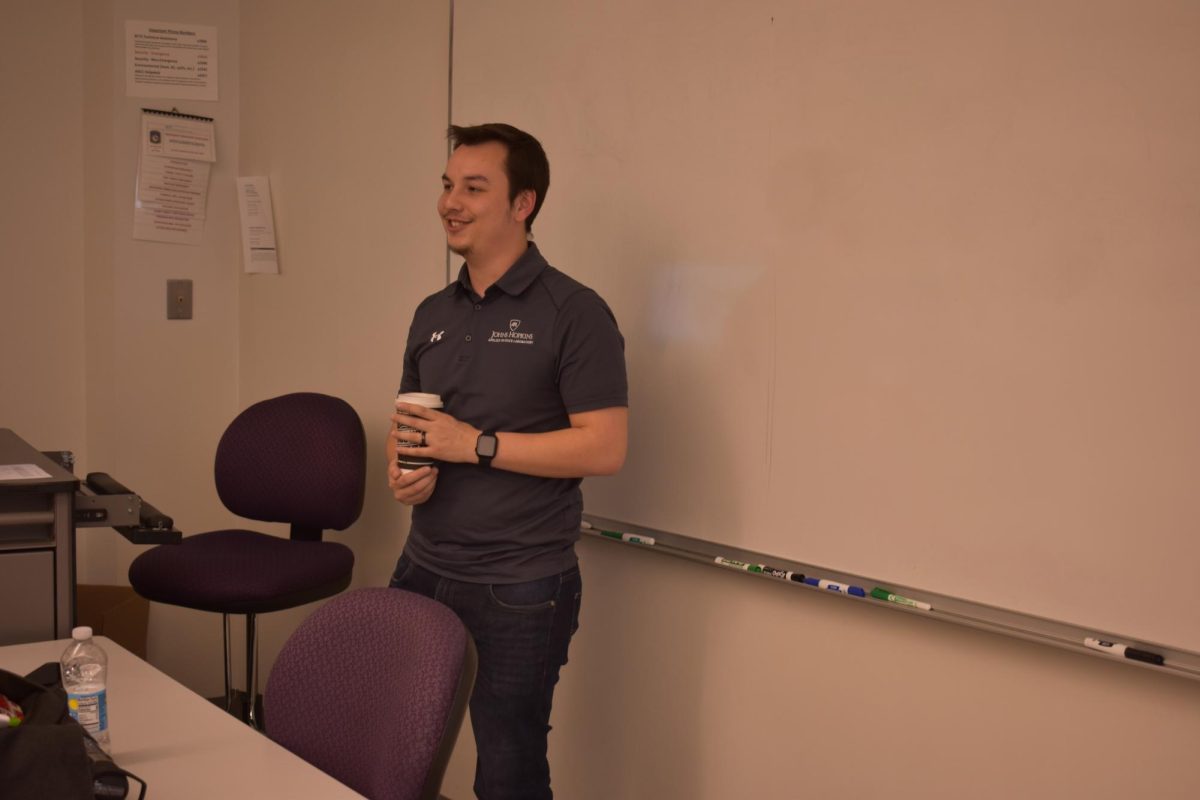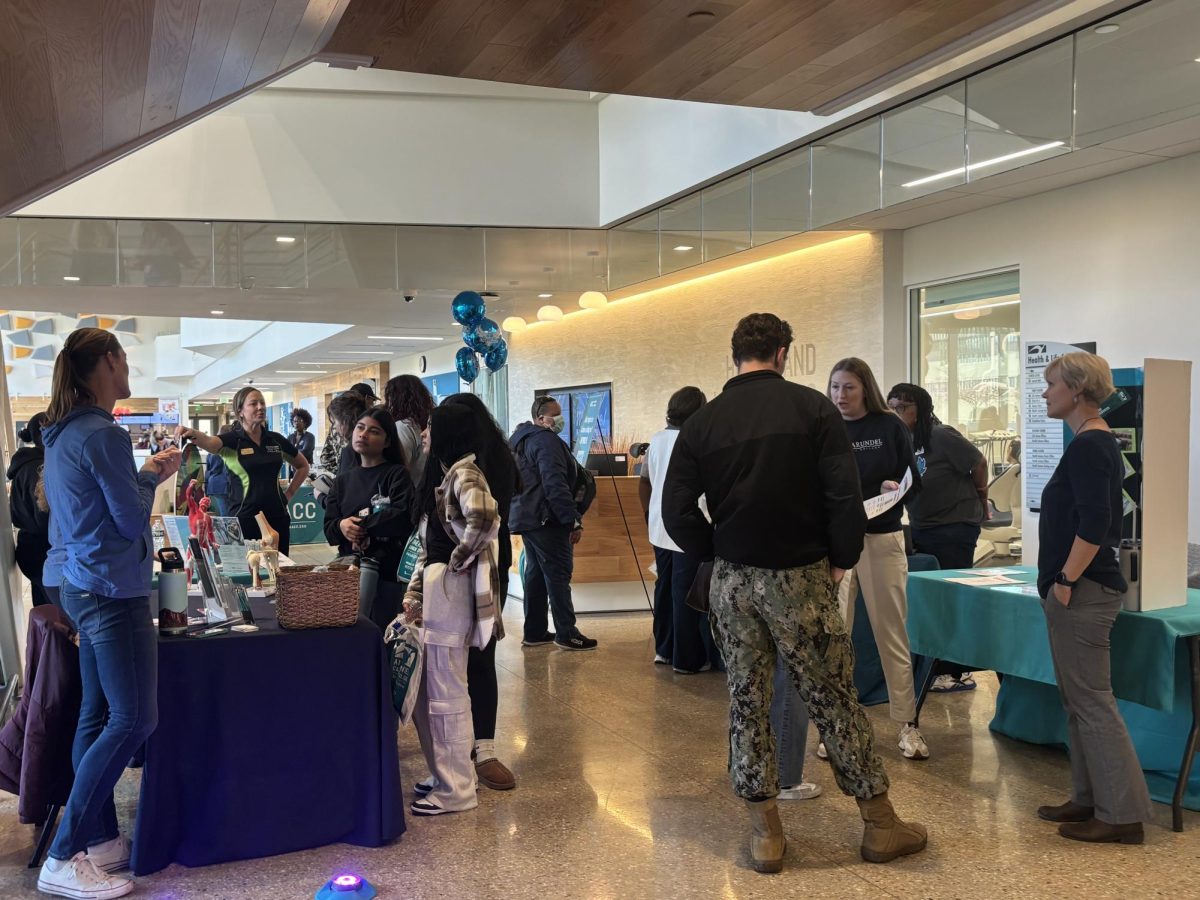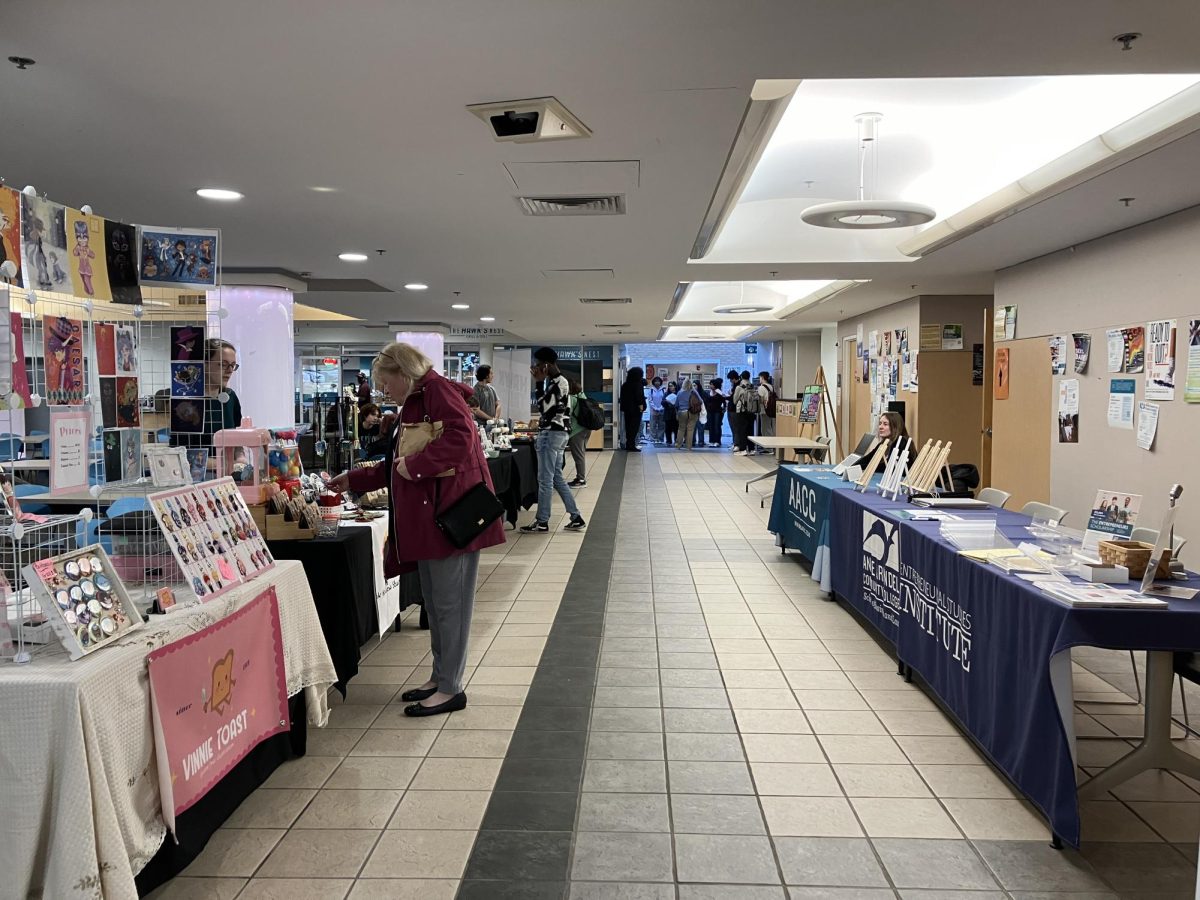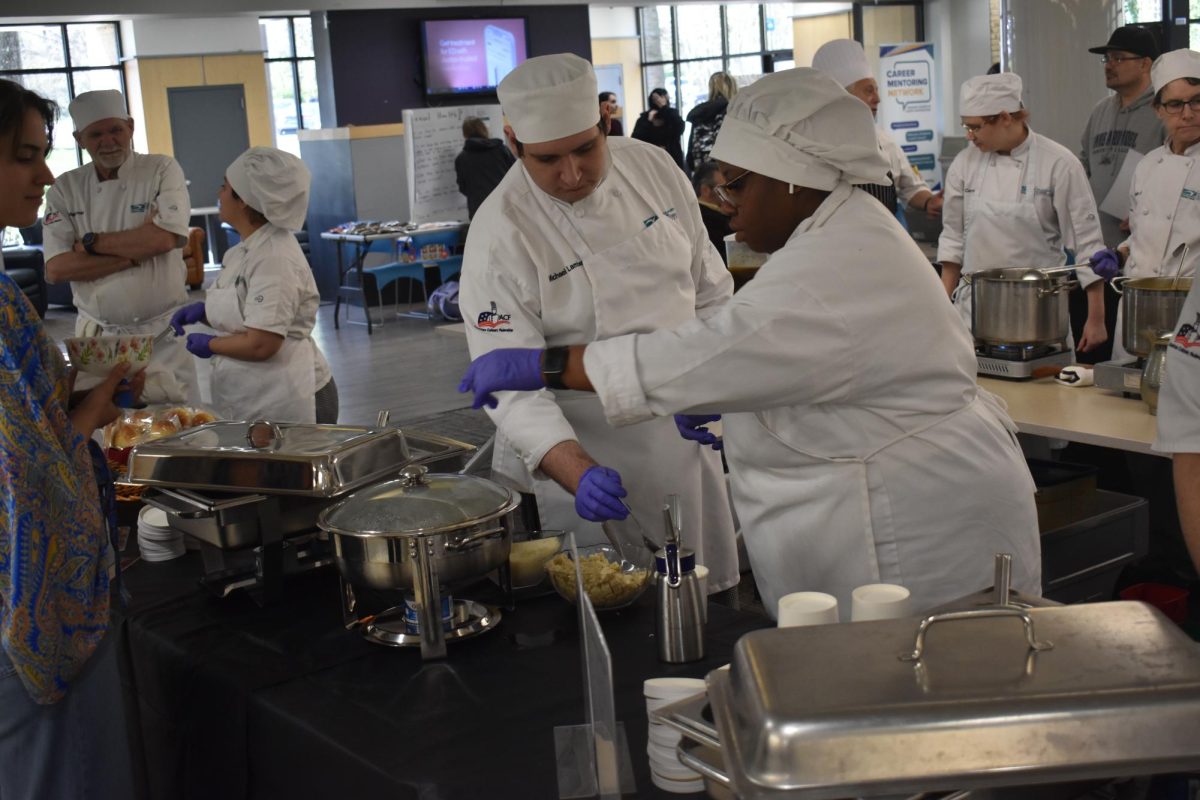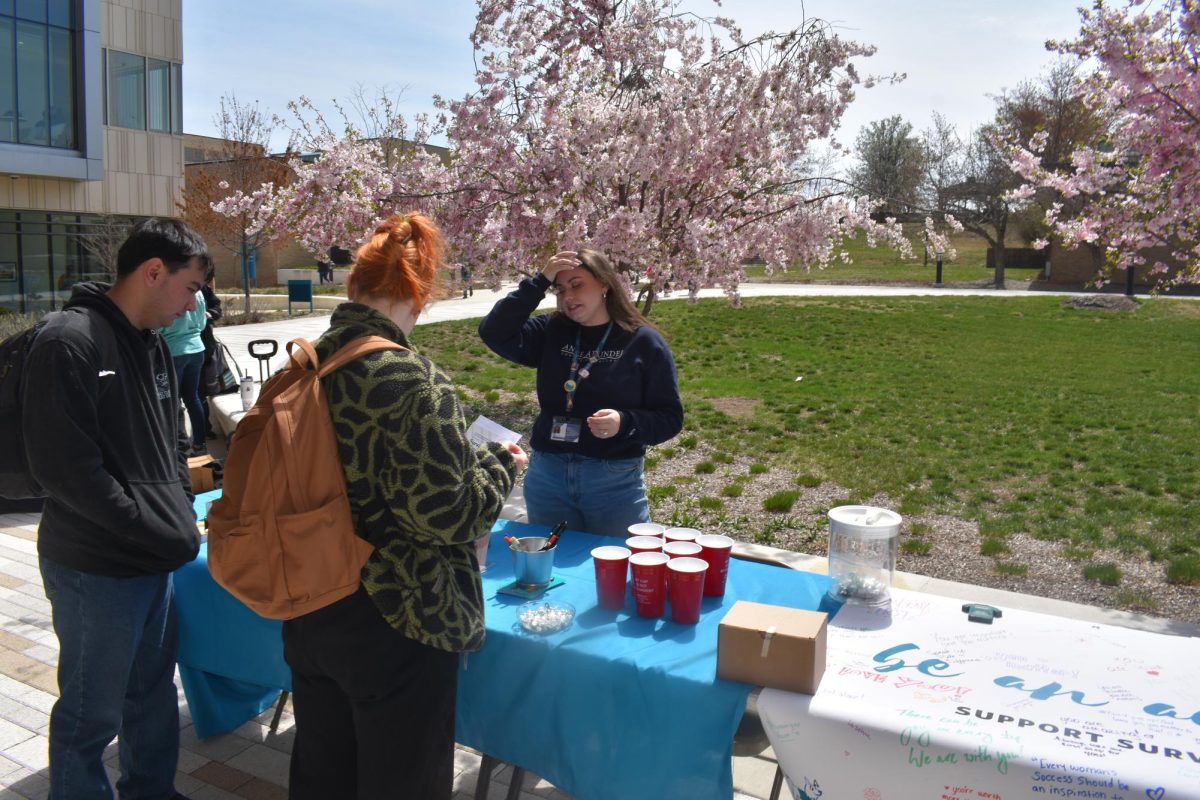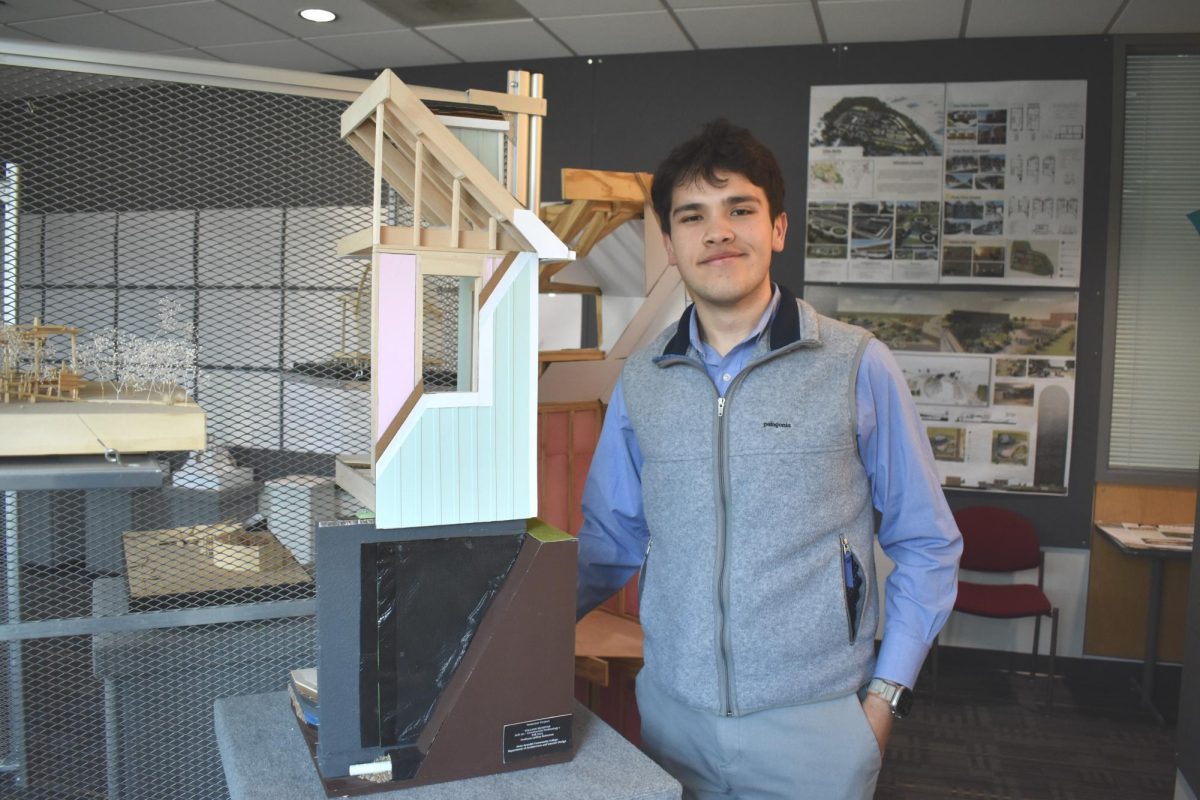A wireless network engineer from the Johns Hopkins Applied Physics Laboratory visited AACC to teach students about cyber networking and cybersecurity on Wednesday.
Jim Santee, the student Cyber Defense Club president, invited Nate Ho, an AACC alumnus and wireless network engineer for Johns Hopkins, to talk about his history with cybersecurity, his journey after graduating from the college, how he got to work for Johns Hopkins, and to answer questions about the field.
“It’s very different than [what’s] in a textbook,” Ho said.
Ho started his cybersecurity career during high school, when he attended the Center of Applied Technology North. He earned his associate degree in information assurance and cybersecurity from AACC and transferred to University of Maryland, Global Campus to get his bachelor’s in computing networks and cybersecurity and master’s in cloud computing architecture.
While he attended UMGC, he worked for the U.S. Naval Academy as a network engineer and then moved to Johns Hopkins Applied Physics Laboratory as a wireless network engineer. He earned his masters of business administration at Johns Hopkins.
Ho said students who attend community college can compete on the same level as those who come from “big-name universities.”
“What you learn at a community college … [will give you] a big advantage,” Ho said. “We learn the, like, hands-on skills here versus at a four-year [university] where you’re learning gen ed. … You’re not at a disadvantage.”
Ho said the “social aspect” of networking is important for students.
“All the jobs that I did get, I was referred into,” Ho said. “[Referrals are] a really good way to get your foot in the door.”
Santee, a first-year information assurance cybersecurity student, said he invited Ho because he is “a prior student here” and because he “has been successful” in the cybersecurity field.
“[We are] showing what the options are after graduation,” Santee said. “Having students that are driven to a larger and larger purpose beyond, like, just getting a degree, I think is essential.”



